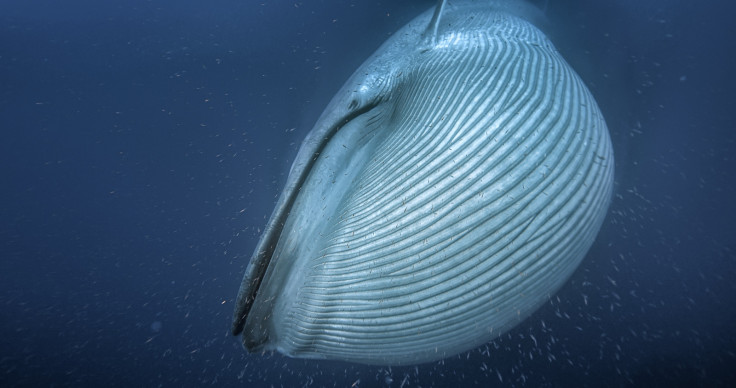The gentle blue whale was once a deadly predator with huge teeth as sharp as a lion's
How did baleen whales evolve their strange filter-feeding habits?
The ancient ancestors of the large and graceful blue whale weren't the gentle giants we know today, but rather deadly predators that caught and killed their prey with large, sharp teeth.
Baleen whales are some of the largest animals of the ocean. They include blue whales, southern right whales and humpback whales. They feed by filtering tiny animals such as krill from the ocean with long strands known as baleen.
This method of feeding has made baleen whales among the most successful feeders on the planet, allowing blue whales to reach their impressive body size. Exactly how whales came to evolve such an efficient system is a long-standing mystery.
The most widely accepted theory of how baleen whales evolved from toothed whales was that their ancestors' teeth formed a zig-zag pattern that allowed a primitive sieve-like effect using solid teeth.
Research published in a study in the journal Biology Letters, overturns this idea. 3D scanning of fossils of Janjucetus, an ancestor of the blue whale, at Museums Victoria and Monash University in Australia has revealed that its teeth couldn't possibly have played this role.
"These results are the first to show that ancient baleen whales had extremely sharp teeth with one function – cutting the flesh of their prey," Museums Victoria's senior curator of vertebrate palaeontology Erich Fitzgerald said in a statement.
"Contrary to what many people thought, whales never used their teeth as a sieve, and instead evolved their signature filter feeding technique later – maybe after their teeth had already been lost."
This is a much more similar behaviour to the toothed whales alive today, such as orcas. The ancient baleen whales' teeth were as sharp as land predators, the authors write in the paper.
"The teeth of Janjucetus were virtually as sharp as those of the living African lion, which we were absolutely surprised to find," Fitzgerald told The Guardian.
Filter-feeding and the evolution of baleen instead is more likely to have emerged after the whales lost their teeth entirely, the authors conclude.

© Copyright IBTimes 2025. All rights reserved.






















